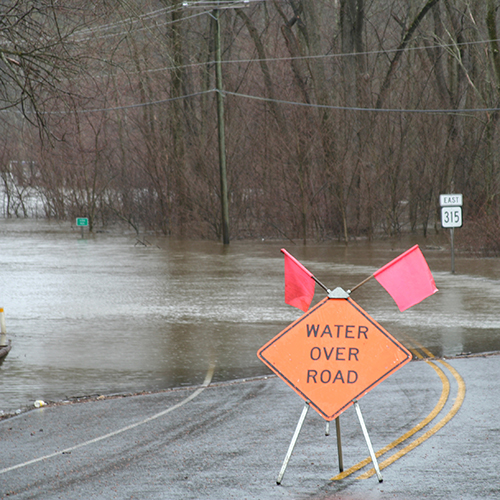Recent Posts
- Essential Earthquake Safety Information: How to Protect Yourself and Your Loved Ones
- What to Do In an Earthquake - The Complete Guide
- Georgia Resident Uses STOP THE BLEED® Training to Save Neighbor
- Emergency Preparedness for Older Adults
- Don't Be a Hot Dog: How to Keep Your Pets Safe This Summer
April Showers Bring May Flowers…and Spring Flooding
Spring is finally here which means warmer temperatures, green grass and colorful flowers. It also means changing weather conditions and in some areas of the country, rain. Lots and lots of rain. The Nat ional Oceanic and Atmospheric Administration (NOAA) is advising Americans to prepare this spring for another round of potentially disastrous flooding of the kind that devastated much of Louisiana, Missouri and Texas late December/early January.
ional Oceanic and Atmospheric Administration (NOAA) is advising Americans to prepare this spring for another round of potentially disastrous flooding of the kind that devastated much of Louisiana, Missouri and Texas late December/early January.
Individuals and families are advised take certain precautions in flood prone areas. These precautions are simple, but they are steps that could save your life.
- Familiarize yourself with the terms weather forecasters use to describe your area’s risk for flooding. A “Flood Watch” means a flood or flash flood is a possibility for your area. A “Flood Warning” means a flash flood or flooding has already occurred or is imminent for your location.
- Ensure your house is stocked with emergency supplies such as a Home Survival Kit that contains a 72 hour supply of non-perishable food and water, emergency lighting, Mylar blankets, first aid items, and a hand-crank/solar powered weather radio in the likely event the power is out. Maintaining communication during a flood event is crucial in ensuring you and your family can safely evacuate to higher ground without encountering closed roads or other deterrents. Your kit should also contain an emergency gas/water shut-off utility tool, medications, food/water for your pets and an extra set of weather appropriate clothing.
- Once a Flood Watch has been issued for your area, monitor changing weather conditions by tuning into your local news station or a NOAA weather band radio. Get yours here
- If a Flood Warning is issued in your area, don’t delay, head to higher ground via the safest evacuation route.
- Don’t travel through flooded roadways. According to Tom Graziano of NOAA, “flooding is the number one cause of weather-related deaths in the U.S.” Standing water on roadsides can be deceptive. A car can be quickly carried away in only 2 feet of water. Don’t succumb to this avoidable dilemma. Turn around, don’t drown!
- Ensure your home is adequately covered for flood damage. Check out FloodSmart.gov for more information.
Parts of Texas and the Midwest are already experiencing torrential flooding. Houston, TX declared a State of Emergency this weekend after a foot of rain fell on the city in a matter of hours. Evacuations are currently taking place and search and rescue operations are in effect.
Communities along the Mississippi and Missouri River basins, parts of the southeastern U.S. from Alabama to North Carolina and low-lying areas in the Ohio River basin and the Tennessee and Cumberland River Valleys are also at risk.
NOAA announced a precipitation outlook for April through June warning of above-average precipitation for these additional areas:
- Most of California
- Southwest
- Gulf Coast
- Southeast
It is going to be a wet spring. Prepare, be vigilant and stay safe.
Credits: Red Cross Flood Safety
